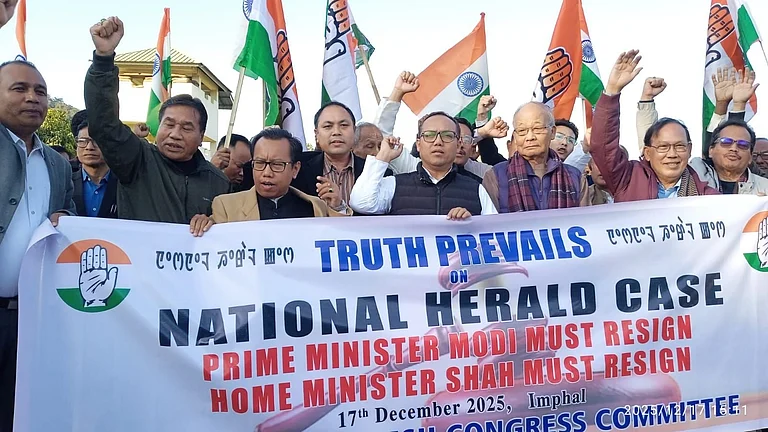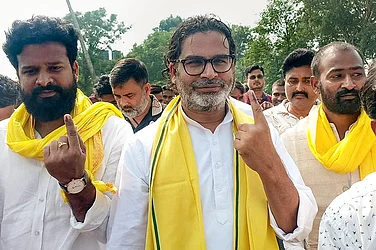Amidst grand preparations for the consecration ceremony of Ayodhya’s Ram temple early this year, many in Karnataka’s coastal Udupi town recalled with fear, the “Dharm Sansad” (religious parliament) held in 1985. Over a thousand Hindutva ideologues and saints passed a resolution, vowing to build a Ram temple at Ayodhya in place of the mosque. What followed after, saw a trail of bloodshed in the coastal region of Karnataka. And the region has remained on the brink of violence since then.
It was in the 80s that the ideology started to gain steam in the state. The spread of Hindutva along the 320 km-long coastal belt of Karnataka presents an interesting case, one that doesn’t run on similar campaign lines of UP or Gujarat.
The Rise of Hindutva
Parallel with the Ram Mandir movement, right-wing groups saw an opportunity in the visible economic advancement and affluence of minority groups—particularly Muslim traders—post 1991 liberalisation. These groups spun narratives, often pitting Muslims against backward classes who were less prosperous. One such rumour, Professor Muzaffar Assadi notes, claimed that Muslims were injecting AIDS through syringes to those who were participating in a festival in Aasodi village. This was further aggravated with the rumour that Muslims were seeking out women as ‘soft targets’, Assadi notes. Without verifying the truth behind such claims, the Karvis (one such backward caste fishermen community) went on a rampage against Muslim houses, he adds. The narrative wasn’t always on purely communal lines. In the 1990s, speeches of Sadhvis Rithambara and Uma Bharti, key figures in the Ram temple movement, were widely broadcast. They would publicly despise women who were ‘influenced’ by western culture.
Such pitting of communities and ideologies against each other helped consolidate a solid base for Hindutva, Assadi notes. For over three decades now, the saffron party has continued to retain power in Udupi, Dakshina Kannada and Uttara Kannada parliamentary constituencies—be it during the Lok Sabha elections or the state assembly elections. In fact, in Dakshina Kannada, the party has not lost a Lok Sabha election since 1991. Despite boasting exceptional literacy rates and development initiatives, these communal narratives from the 80s are found even today.
Recent Communal Tensions
A poem titled ‘Work Is Worship’ by Rabindranath Tagore and some purported audio clips about the Ram temple were enough to cause tensions at St Gerosa High School, located in the heart of Mangaluru city, says Congress leader M G Hegde. While teaching the poem to students, English teacher Sister Prabha allegedly made derogatory statements against Lord Ram and Prime Minister Narendra Modi, say BJP MLAs. She was accused of ‘defaming Hindu religion’—an allegation that the teacher and school management strongly deny. Despite no evidence proving that the woman in the audio notes was the same teacher, the school management suspended her amid fears that the situation could turn violent. Later, a case was registered against BJP MLA Vedavyas Kamath and others for disrupting peace and harmony.
This April afternoon, the school campus looks almost deserted. But two boards within the Christian school stood out. One said, ‘Love your enemies’ and the other ‘All religions are equal’. The school has maintained that it has continued to relay the same message, of love and equality for all religions, for the last 60 years.
Although the incident is the first in over a decade involving Hindu and Christian communities of Mangaluru, it finds a place in the long list of educational institutions that have been caught in the crossfire of the BJP’s politics over the last few decades. As Vishanz Pinto, former Associate Professor at St. Aloysius College, Mangaluru, notes, the coastal belt of the state is lined with schools which are owned by the Sangh and its functionaries. “The rise of the population of the minorities is one of the important ‘bogeys’ of fear created by the rightist groups in India,” he wrote.
It was in these coastal regions where the BJP’s contentious decision of banning hijab in educational institutions was strongly resisted by students two years ago. After months of legal fights, seeking desperate transfers to other educational institutions that allowed hijab in classrooms and some students giving in to the ‘dress code’, the government order of 2022 still remains in place.
Although Congress leaders have repeatedly reiterated their opposition to the ban, the government hasn’t yet revoked the order. Although hijab-wearing students now say that the rules have been softened, those who were at the receiving end of the ban in the initial months, say that the damage has been done. One such student recalled her fight. “It was presented as if we were being rebels and the school was the victim of our actions,” she says. Now a practicing lawyer, the student wonders where her other friends/classmates are. Those who had the means to, moved to other colleges but many dropped out, she says. A fact-finding report by PUCL, which was released in September 2022, notes that while there is little to no official data regarding the number of students who were particularly impacted by the ban, the government stated that the total dropouts of hijab-wearing girls stand at 1,010 because of the hijab ban (or other reasons as well).
Is There a Modi Wave?
The BJP dropped incumbent and firebrand Hindutva MP Nalin Kumar Kateel from the candidate list for the Dakshina Kannada constituency and fielded Brijesh Chowta instead. But none of the posters and placards that were distributed as campaign material during PM Modi’s roadshow in Mangaluru on April 14 had Chowta’s image. They featured Modi, often standing in front of a backdrop of either the Ram temple, the moon along with the Chandrayaan 3 module or a group of women with their hands folded and ‘33%’ highlighted in bold (referring to the recently passed Women’s Reservation Bill). Even the slogans hurled by supporters were ‘PM Modi ki Jai’, ‘Amit Shah ki Jai’ and ‘Jai Shri Ram’.
A closer look at the state’s voting history shows that some constituencies have often been in favour of incumbent MLAs during assembly elections—a trend that was overtly visible in Bengaluru in 2023. Analysts, however, warn against drawing such conclusions between state and general elections. The state has never voted in a similar pattern. While voting during assembly elections last year, Priyanshi (name changed), 25, reiterated that while she prefers a local/regional leader to rule at the state, she is happy with PM Modi and his BJP winning at the centre.
Trail Left by Tensions
Hijab, halal, and ‘love jihad’ are some terms that are often heard ahead of elections. But locals say there is a relative calm this time. “Otherwise, if people of different faiths are seen hanging out together, they are often harassed and picked up,” says a local tea vendor. At least 12 such moral policing incidents were reported last year in Dakshina Kannada and Udupi districts. One reason for the relative calm, Congress workers say, is the anti-communal wing launched by the state Congress after coming to power last year.
Despite Modi’s popularity, civil society activists and INDIA bloc parties like the CPI-M and AAP are hoping for a change. At a convention on April 15, a pledge was taken to ‘defeat the BJP and its policies’. Jobs, education, health, jailed ministers and people’s concerns in general were some of the points of discussion at the convention. Reviewing the BJP manifesto on the stage, Muneer Katipalla, the State Secretary of DYFI/CPI-M, said: “It emphasises issues like the Ram Mandir and Article 370, yet fails to address promises ... like two crore jobs annually.”
A similar view was echoed by a college student who was part of the audience. “It is not that we don’t respect our religion, be it Hinduism or not, but that should not be the top priority of the government when employment opportunities are scarce,” he says. Some at the convention remarked that they don’t see a suitable alternative party currently, but urged others to not vote for the BJP. Others saw some hope in the INDIA bloc.
Civil society organisations, like Bahutva Karnataka, played an important role in Karnataka Congress’ win last year, by highlighting the incumbent government’s failed promises. They did not ask voters to vote for Congress or JD (S) but focused on reviewing the performance of the sitting government. Will these organisations, along with INDIA bloc leaders, help sway the tide of Coastal Karnataka this time?
MORE FROM THIS ISSUE
Anisha Reddy in Mangaluru and Udupi
This appeared in the print as 'Coastal Turbulence'


































